FoodScoop
- Especially sturdy model
- Stainless steel AISI 304 (1.4301)


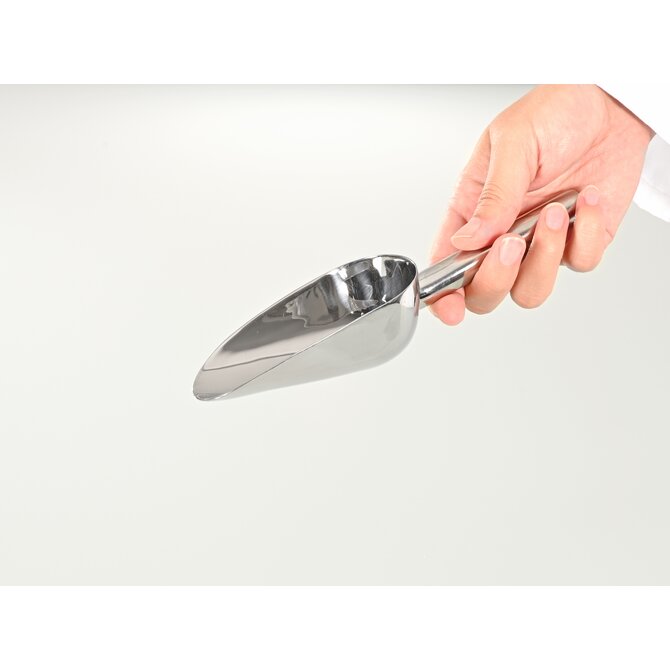















Packaging unit
Piece
Detailed information
Very stable hand scoop for various applications, particularly suited for the food industry. Seamless connection of scoop and hollow handle, therefore without crevices and edges. Especially smooth, highly polished surface.



Typical application area of the product
Very stable hand scoop for various applications, particularly suited for the food industry.

- FoodScoop
Specifications
General material
1.4301 (AISI 304)
Stainless steel (1.4301), AISI 304
Volume
- Contents:
- 100 ml
Colouring
- Colour:
- silver
Blade dimensions
- Length:
- 120 mm
- Width:
- 60 mm
- Height:
- 45 mm
Other dimensions
- Total length:
- 215 mm
- Handle/handle length:
- 105 mm
Shovels
- Special features Blades:
- Detectable,Polished surface
Similar products


Scoop AISI 304
The stainless steel scoop can be used for taking samples of powders, granulates and pastes. Made of stainless steel AISI 304 (1.4301), the material is sterilisable and autoclavable. The rustproof stainless steel scoop has a smooth, high-gloss polished surface and is food-safe.
The tubular shape makes it easy to immerse the scoop in the medium being sampled. The high sides prevent the sample from trickling out. The round handle offers a good grip
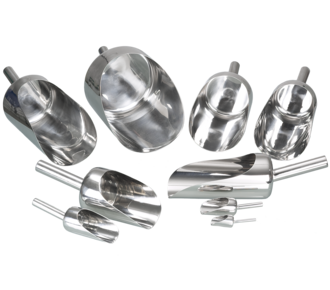
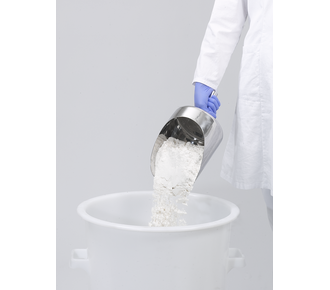
PharmaScoop
This sample scoop PharmaScoop has been developed in order to meet the high requirements of the pharmaceutical industry, such as those contained in the FDA regulations.
Like all samplers for the pharmaceutical industry, they are made of stainless steel AISI 316 without edges, crevices or undercuts in which sample residues could collect and contaminate subsequent samples. The highly polished inner and outer surfaces of the scoop therefore meet all the requirements for GMP compliance in production and sampling.
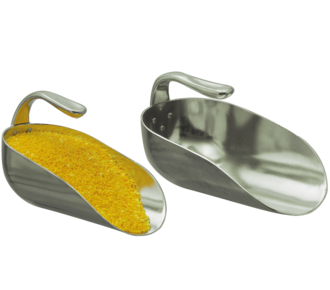
EasyScoop
When sampling bulk goods with a high specific weight, conventional scoops subject the user‘s wrist to great stress. EasyScoop with its centrally arranged inner grip is ergonomically designed and ensures easy and safe work. As EasyScoop is considerably shorter than conventional scoops, it is easier to take samples from narrow containers.
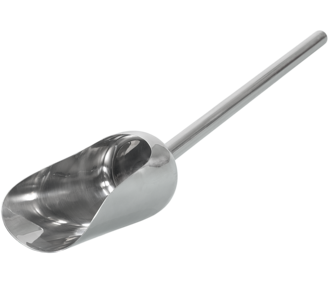
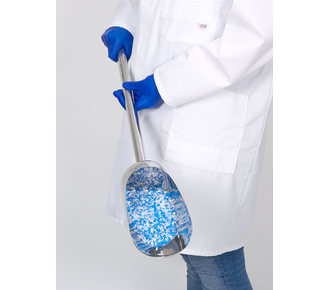
PharmaScoop with long handle
The long handle of the sample scoop makes it possible to take samples even from places that are difficult to reach, for example large containers with very little content. The high rim prevents the sample from spilling after it is taken. The light design of the stainless steel scoop ensures comfortable handling.


LaboPlast® scoop, disposable


Food scoop, blue
The SteriPlast® food scoop, made of blue polystyrene, is produced in our class 7 clean room (10,000), individually packaged for disposable use and then sterilised by gamma rays.
The food scoop is ideal for powders, granulates and pastes.
The shade of blue that is used does not occur in a natural form in foodstuffs. Because of this, blue products or parts of them can be quickly found and easily identified in a visual check if they are ever mixed into production.
The use of blue tools thus helps to meet the requirements of the HACCP hazard analysis and assessment in reference to foreign objects. This is an important criterion, especially in food processing and production and in the animal feed and pharmaceutical industry.


Detectable scoops, blue
Detectable SteriPlast® scoops, made of blue polystyrene, are produced in our class 7 clean room (10,000), individually packaged for disposable use and then sterilised by gamma rays.
Detectable scoops are ideal for powders, granulates and pastes.
These samplers are not only coloured blue but also have a special additive in the material that makes them visible to metal detectors or X rays. These products can therefore be rejected with standard systems for checking for foreign objects, even though they are made of plastic.

 Deutsch
Deutsch
 français
français
 español
español
 русский
русский
 italiano
italiano
 日本語
日本語
 Ελληνικά
Ελληνικά
 polski
polski
 português
português
 português (Brasil)
português (Brasil)
 Türkçe
Türkçe
 中文
中文



























































